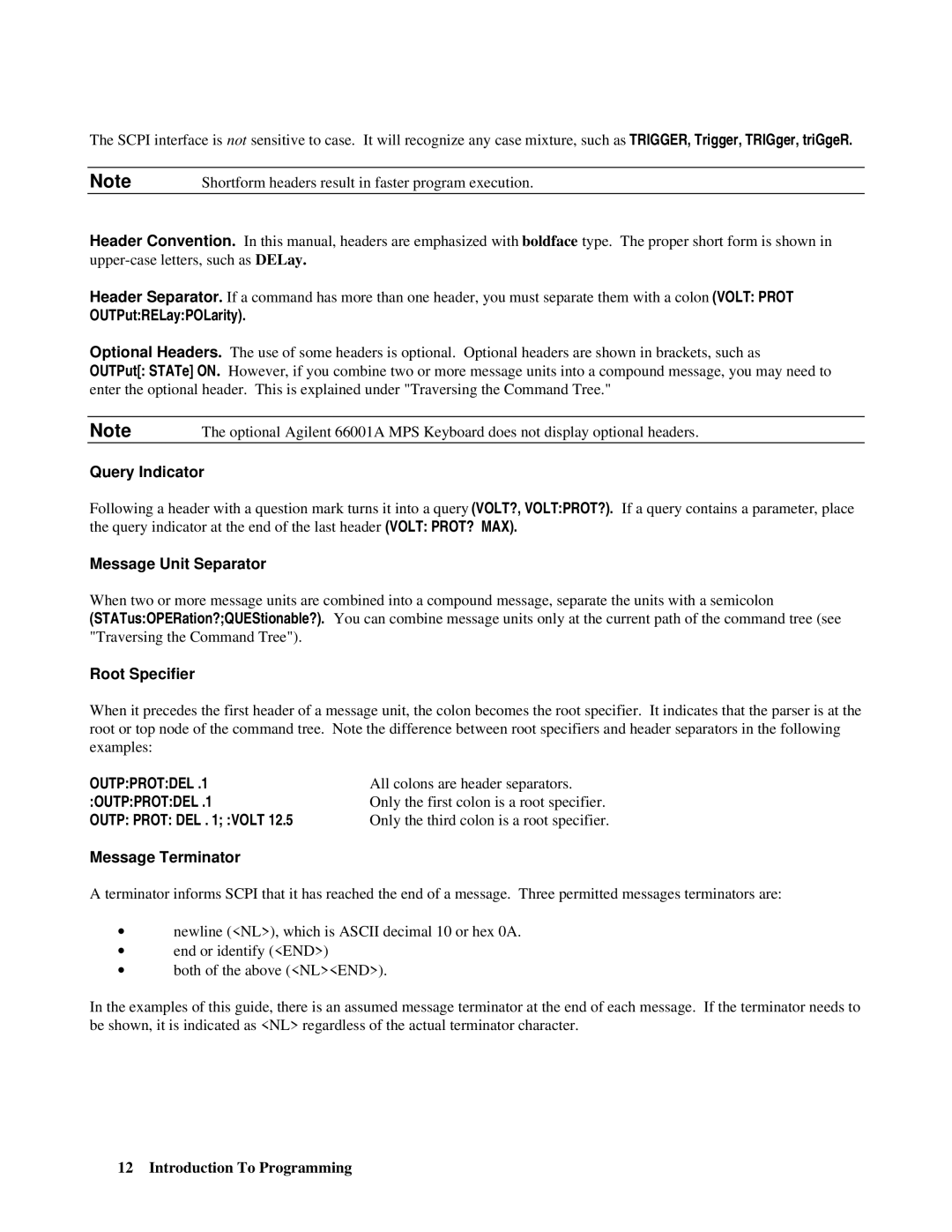
The SCPI interface is not sensitive to case. It will recognize any case mixture, such as TRIGGER, Trigger, TRIGger, triGgeR.
Note | Shortform headers result in faster program execution. |
Header Convention. In this manual, headers are emphasized with boldface type. The proper short form is shown in
Header Separator. If a command has more than one header, you must separate them with a colon (VOLT: PROT
OUTPut:RELay:POLarity).
Optional Headers. The use of some headers is optional. Optional headers are shown in brackets, such as
OUTPut[: STATe] ON. However, if you combine two or more message units into a compound message, you may need to enter the optional header. This is explained under "Traversing the Command Tree."
Note | The optional Agilent 66001A MPS Keyboard does not display optional headers. |
Query Indicator
Following a header with a question mark turns it into a query (VOLT?, VOLT:PROT?). If a query contains a parameter, place the query indicator at the end of the last header (VOLT: PROT? MAX).
Message Unit Separator
When two or more message units are combined into a compound message, separate the units with a semicolon (STATus:OPERation?;QUEStionable?). You can combine message units only at the current path of the command tree (see "Traversing the Command Tree").
Root Specifier
When it precedes the first header of a message unit, the colon becomes the root specifier. It indicates that the parser is at the root or top node of the command tree. Note the difference between root specifiers and header separators in the following examples:
OUTP:PROT:DEL .1 | All colons are header separators. |
:OUTP:PROT:DEL .1 | Only the first colon is a root specifier. |
OUTP: PROT: DEL . 1; :VOLT 12.5 | Only the third colon is a root specifier. |
Message Terminator
A terminator informs SCPI that it has reached the end of a message. Three permitted messages terminators are:
∙newline (<NL>), which is ASCII decimal 10 or hex 0A.
∙end or identify (<END>)
∙both of the above (<NL><END>).
In the examples of this guide, there is an assumed message terminator at the end of each message. If the terminator needs to be shown, it is indicated as <NL> regardless of the actual terminator character.
12 Introduction To Programming
